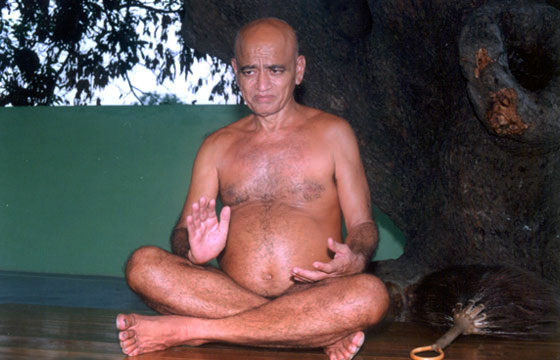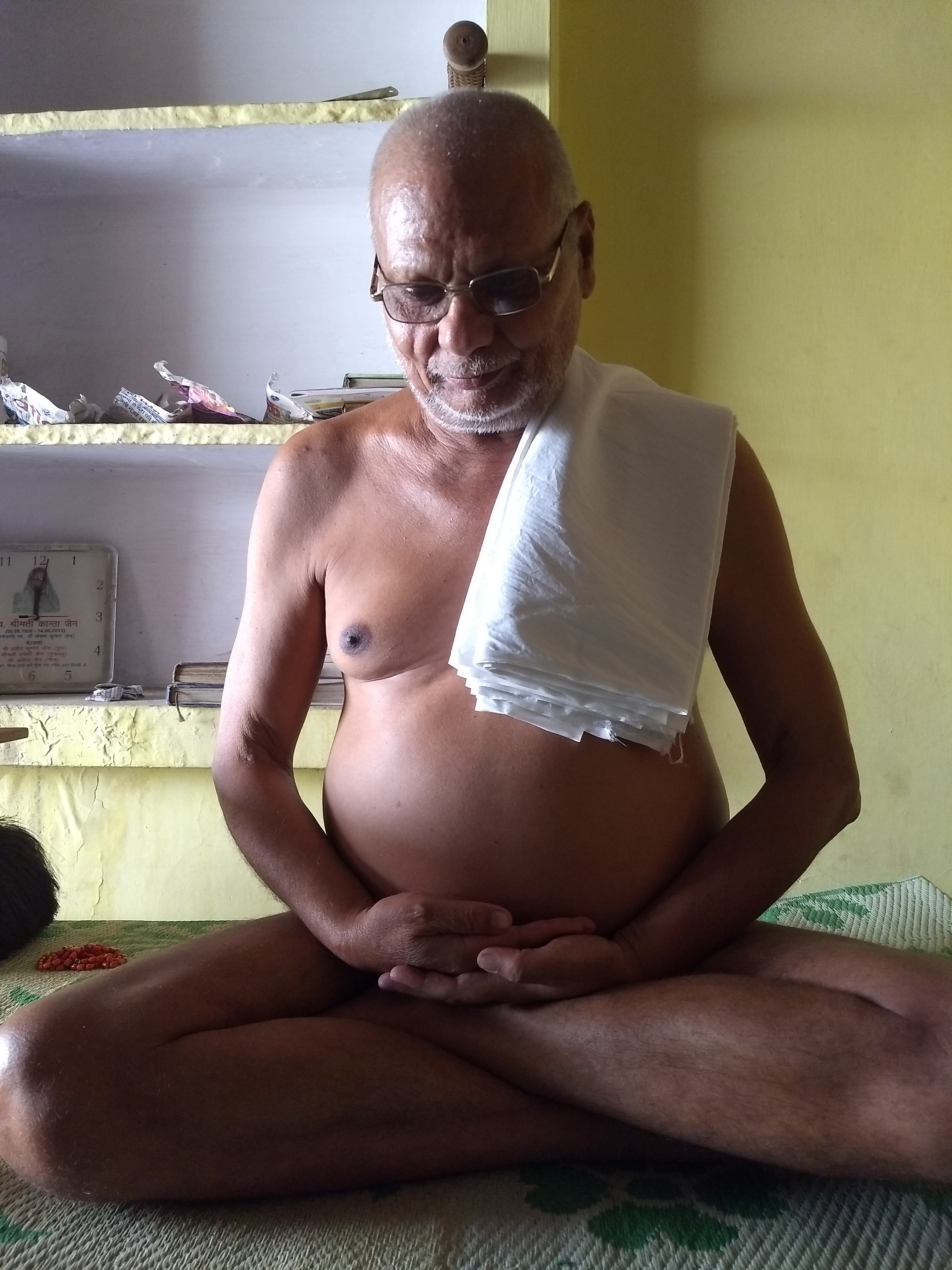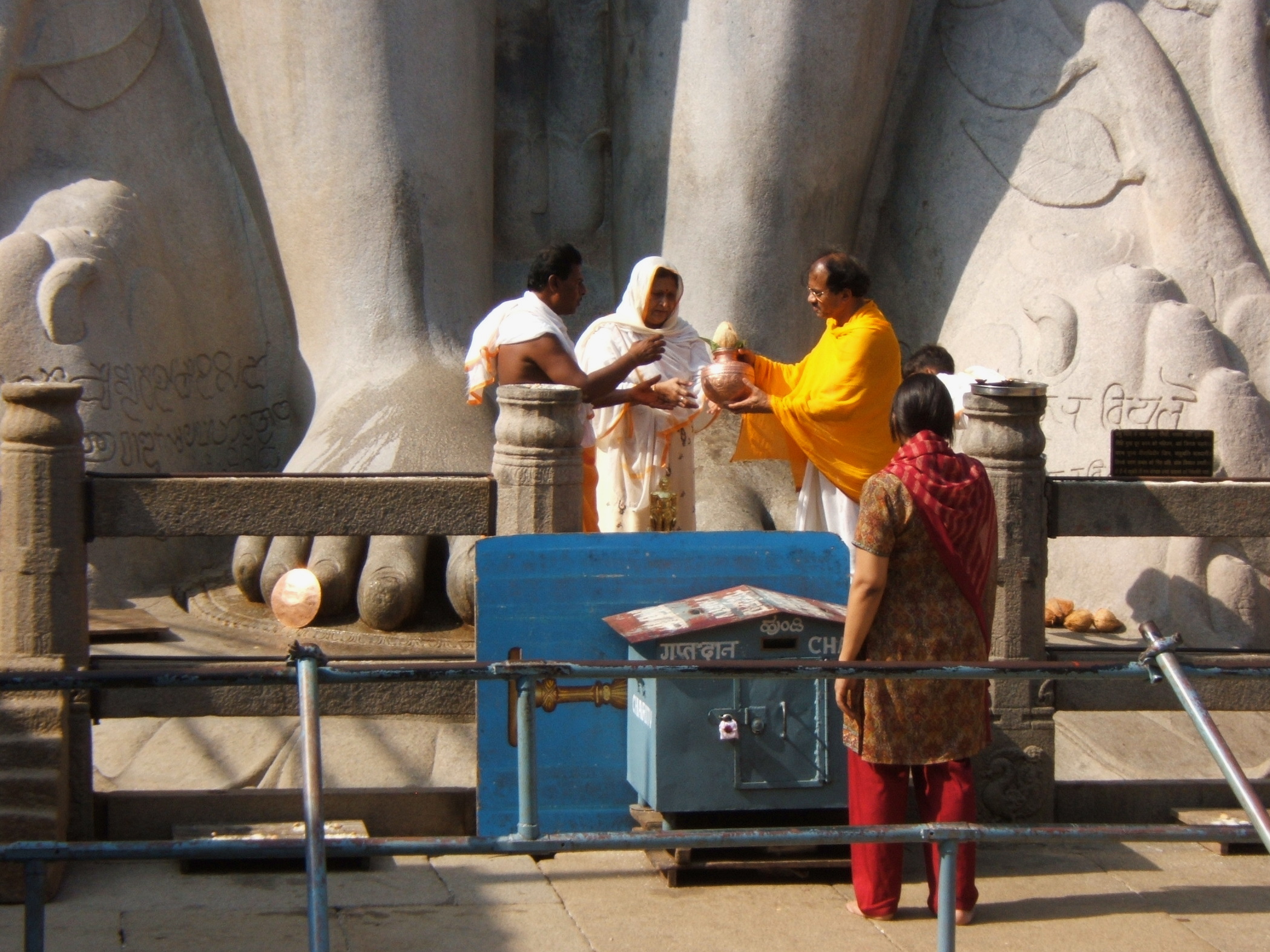|
Pratima (Jainism)
In Jainism, ''Pratima'' ( sa, प्रतिमा) is a step or a stage marking the spiritual rise of a lay person (''shravak''). There are eleven such steps called ''pratima''. After passing the eleven steps, one is no longer a ''sravaka'', but a ''muni'' (monk). Rules prescribed for laymen are divided into twelve ''vrata'' (vows) and eleven ''pratimas'' (steps) and are described in several codes of conduct ( ''shravakacharas''). The ''pratimas'' are mentioned in several ancient texts like Ratnakaranda Shravakachara (2nd century A.D.).Upasakdashang aur uska Shravakachar, Subhash Kothari, Agam Ahimsa Samta Evam Prakrit Sansthan, Udaipur 1988 Twelve vows The twelve vows are: Eleven ''Pratima'' The eleven stages (''pratima'') are: #Darshan Pratima (Right perspective): The worship of the true God (i.e., tirthanhara,) guru (preceptor) and shastra (Scripture), and the avoidance of gambling, meat-eating, drinking (wine), adultery, hunting, thieving and debauchery. #Vrat Pr ... [...More Info...] [...Related Items...] OR: [Wikipedia] [Google] [Baidu] |
Jainism
Jainism ( ), also known as Jain Dharma, is an Indian religions, Indian religion. Jainism traces its spiritual ideas and history through the succession of twenty-four tirthankaras (supreme preachers of ''Dharma''), with the first in the current time cycle being Rishabhadeva, whom the tradition holds to have lived millions of years ago, the twenty-third ''tirthankara'' Parshvanatha, whom historians date to the 9th century BCE, and the twenty-fourth ''tirthankara'' Mahāvīra, Mahavira, around 600 BCE. Jainism is considered to be an eternal ''dharma'' with the ''tirthankaras'' guiding every time cycle of the Jain cosmology, cosmology. The three main pillars of Jainism are ''Ahimsa in Jainism, ahiṃsā'' (non-violence), ''anekāntavāda'' (non-absolutism), and ''aparigraha'' (asceticism). Jain monks, after positioning themselves in the sublime state of soul consciousness, take five main vows: ''ahiṃsā'' (non-violence), ''satya'' (truth), ''Achourya, asteya'' (not stealing), ''b ... [...More Info...] [...Related Items...] OR: [Wikipedia] [Google] [Baidu] |
Sāmāyika
''Sāmāyika'' is the vow of periodic concentration observed by the Jains. It is one of the essential duties prescribed for both the ''Śrāvaka'' (householders) and ascetics. The preposition ''sam'' means one state of being. To become one is ''samaya''. That, which has oneness as its object, is ''sāmāyikam''. ''Sāmāyika'' is aimed at developing equanimity and to refrain from injury. On the third '' pratimā'' (stage) the householder resolves to observe the ''sāmāyika'' vow three times a day. According to the Jain text, '' Purushartha Siddhyupaya'': ''Sāmāyika'' is also one of the five kinds of conduct (''cāritra'') other kinds being reinitiation, purity of non-injury, slight passion and perfect conduct. It is of two kinds — with and without time limit. Duration The ''sāmāyika'' is performed for an ''antara-muhurta'' (about 48 minutes) every day. Champat Rai Jain in his book ''The Key of Knowledge'' writes: Procedure In performing ''sāmāyika'', the ''śr ... [...More Info...] [...Related Items...] OR: [Wikipedia] [Google] [Baidu] |
Jain Muni
Jain monasticism refers to the order of monks and nuns in the Jain community and can be divided into two major denominations: the ''Digambara'' and the ''Śvētāmbara''. The monastic practices of the two major sects vary greatly, but the major principles of both are identical. Five ''mahāvratas'' (Great Vows), from Mahavira's teachings, are followed by all Jain ascetics. Historians believe that a united Jain ''sangha'' (community) existed before 367 BCE, about 160 years after the ''moksha'' (liberation) of Mahavira. The community then gradually divided into the major denominations. Terminology ''Digambaras'' use the word ' for male monastics and ''aryika'' for female monastics. ''Digambara monks'' are also called ''nirgrantha'' (without bonds). ''Śvētāmbaras'' use the word ''sadhvi''s for female monastics. History Mahavira had 11 chief disciples, Indrabhuti Gautama being the most senior. Each chief disciple was made responsible for 250 to 500 monks. The Jain sangha ( ... [...More Info...] [...Related Items...] OR: [Wikipedia] [Google] [Baidu] |
Digambara
''Digambara'' (; "sky-clad") is one of the two major schools of Jainism, the other being ''Śvētāmbara'' (white-clad). The Sanskrit word ''Digambara'' means "sky-clad", referring to their traditional monastic practice of neither possessing nor wearing any clothes. Digambara and Śvētāmbara traditions have had historical differences ranging from their dress code, their temples and iconography, attitude towards female monastics, their legends, and the texts they consider as important. Digambara monks cherish the virtue of non-attachment and non-possession of any material goods. Monks carry a community-owned ''picchi'', which is a broom made of fallen peacock feathers for removing and thus saving the life of insects in their path or before they sit. The Digambara literature can be traced only to the first millennium, with its oldest surviving sacred text being the mid-second century ''Ṣaṭkhaṅḍāgama'' "Scripture in Six Parts" of Dharasena (the Moodabidri manuscripts) ... [...More Info...] [...Related Items...] OR: [Wikipedia] [Google] [Baidu] |
Jain Muni
Jain monasticism refers to the order of monks and nuns in the Jain community and can be divided into two major denominations: the ''Digambara'' and the ''Śvētāmbara''. The monastic practices of the two major sects vary greatly, but the major principles of both are identical. Five ''mahāvratas'' (Great Vows), from Mahavira's teachings, are followed by all Jain ascetics. Historians believe that a united Jain ''sangha'' (community) existed before 367 BCE, about 160 years after the ''moksha'' (liberation) of Mahavira. The community then gradually divided into the major denominations. Terminology ''Digambaras'' use the word ' for male monastics and ''aryika'' for female monastics. ''Digambara monks'' are also called ''nirgrantha'' (without bonds). ''Śvētāmbaras'' use the word ''sadhvi''s for female monastics. History Mahavira had 11 chief disciples, Indrabhuti Gautama being the most senior. Each chief disciple was made responsible for 250 to 500 monks. The Jain sangha ( ... [...More Info...] [...Related Items...] OR: [Wikipedia] [Google] [Baidu] |
Kshullaka
A kshullak (or kshullaka, lit. small or junior) is a junior Digambar Jain monk. A kshullak wears two garments as opposed to a full monk who wears no clothes.Jinendra Varni, Jainendra Siddhanta Kosa, V.2, pages, 188-189 Specifically a Kshullaka is a Shravaka of the highest degree at 11th Pratima. A kshullak is sometimes referred to by the earlier title Varni, even though Varni corresponds to the seventh Pratima. Well known kshullakas include: * Kshullaka Ganeshprasad Varni * Kshullaka Jinendra Varni A Digambara Jain shravaka at the highest rank of 11th pratima is either a kshullaka or an ailaka. He is just one step below a full muni. His conduct is prescribed in Vasunandi Sravakachara and Lati Samhita. A kshullaka wears a loin cloth (kaupina) and a white rectangular cloth as a wrap. An ailak uses only a loin cloth. A kshullaka may live in a house or may be a wanderer. He may eat food placed in his palms, or from a container. He eats once a day. He may beg from a single ... [...More Info...] [...Related Items...] OR: [Wikipedia] [Google] [Baidu] |
Varni
Varni is a town in Nizamabad district in the Indian state of Telangana. Varni Mandal Headquarters is Varni. Geography Varni is located at . It has an average elevation of 403 metres. It comes under Banswada Legislative and Zaheerabad Parliamentary constituencies. There is a statue of Netaji Shubash Chandra Bose in center of the town, popularly known as center/Bose bomma. Economy The villages under this mandal live mainly on agriculture and animal husbandry. Nizamsagar Project Canal is the main source of irrigation, though many bore-wells are used in recent times. Milk production is high in this area. Demography According to Indian census The decennial Census of India has been conducted 16 times, as of 2021. While it has been undertaken every 10 years, beginning in 1872 under British Viceroy Lord Mayo, the first complete census was taken in 1881. Post 1949, it has been conducted by ..., 2011, the demographic details of Varni mandal are as follows: * Total Population: 1, ... [...More Info...] [...Related Items...] OR: [Wikipedia] [Google] [Baidu] |
Sallekhana
''Sallekhana'' (IAST: ), also known as ''samlehna'', ''santhara'', ''samadhi-marana'' or ''sanyasana-marana'', is a supplementary vow to the ethical code of conduct of Jainism. It is the religious practice of voluntarily fasting to death by gradually reducing the intake of food and liquids. It is viewed in Jainism as the thinning of human passions and the body, and another means of destroying rebirth-influencing karma by withdrawing all physical and mental activities. It is not considered as a suicide by Jain scholars because it is not an act of passion, nor does it employ poisons or weapons. After the ''sallekhana'' vow, the ritual preparation and practice can extend into years. ''Sallekhana'' is a vow available to both Jain ascetics and householders. Historic evidence such as ''nishidhi'' engravings suggest ''sallekhana'' was observed by both men and women, including queens, in Jain history. However, in the modern era, death through ''sallekhana'' has been a relatively un ... [...More Info...] [...Related Items...] OR: [Wikipedia] [Google] [Baidu] |
Non-possession
Non-possession (aparigraha ( sa, अपरिग्रह)) is a philosophy that holds that no one or anything possesses anything. ln Jainism, aparigraha is the virtue of non-possessiveness, non-grasping or non-greediness.Arti Dhand (2002), The dharma of ethics, the ethics of dharma: Quizzing the ideals of Hinduism, Journal of Religious Ethics, 30(3), pages 347-372 Aparigrah is the opposite of ''parigrah'', and refers to keeping the desire for possessions to what is necessary or important, depending on one's life stage and context. The precept of ''aparigraha'' is a self-restraint (temperance) from the type of greed and avarice where one's own material gain or happiness comes by hurting, killing or destroying other human beings, life forms or nature. Aparigraha is related to and in part a motivator of dāna (proper charity), both from giver's and receiver's perspective. Non-possession is one of the principles of Satyagraha, a philosophical system based on various religious and p ... [...More Info...] [...Related Items...] OR: [Wikipedia] [Google] [Baidu] |
Śrāvaka (Jainism)
In Jainism, the word Śrāvaka or Sāvaga (from Jain Prakrit) is used to refer the Jain laity (householder). The word ''śrāvaka'' has its roots in the word ''śrāvana'', i.e. the one who listens (the discourses of the saints). The ''tirthankara'' restores or organises the ''sangha'', a fourfold order of ''muni'' (male monastics), ''aryika'' (female monastics), '' śrāvaka''s (male followers) and ''śrāvikā''s (female followers). In Jainism, there are two kinds of votaries: *The householder (one with minor vows) *The homeless ascetic (one with major vows) According to the Jain text ''Puruşārthasiddhyupāya'': Ratnakaranda śrāvakācāra, a major Jain text, discusses the conduct of a Śrāvaka in detail. Six essentials In Jainism, six essential duties (''avashyakas'') are prescribed for a ''śrāvaka''. These help the laity in achieving the principle of ahimsa which is necessary for his/her spiritual upliftment. The six duties are: #Worship of Pañca-Parameṣṭhi ... [...More Info...] [...Related Items...] OR: [Wikipedia] [Google] [Baidu] |
Aparigraha
Non-possession (aparigraha ( sa, अपरिग्रह)) is a philosophy that holds that no one or anything possesses anything. ln Jainism, aparigraha is the virtue of non-possessiveness, non-grasping or non-greediness.Arti Dhand (2002), The dharma of ethics, the ethics of dharma: Quizzing the ideals of Hinduism, Journal of Religious Ethics, 30(3), pages 347-372 Aparigrah is the opposite of ''parigrah'', and refers to keeping the desire for possessions to what is necessary or important, depending on one's life stage and context. The precept of ''aparigraha'' is a self-restraint (temperance) from the type of greed and avarice where one's own material gain or happiness comes by hurting, killing or destroying other human beings, life forms or nature. Aparigraha is related to and in part a motivator of dāna (proper charity), both from giver's and receiver's perspective. Non-possession is one of the principles of Satyagraha, a philosophical system based on various religious and p ... [...More Info...] [...Related Items...] OR: [Wikipedia] [Google] [Baidu] |




